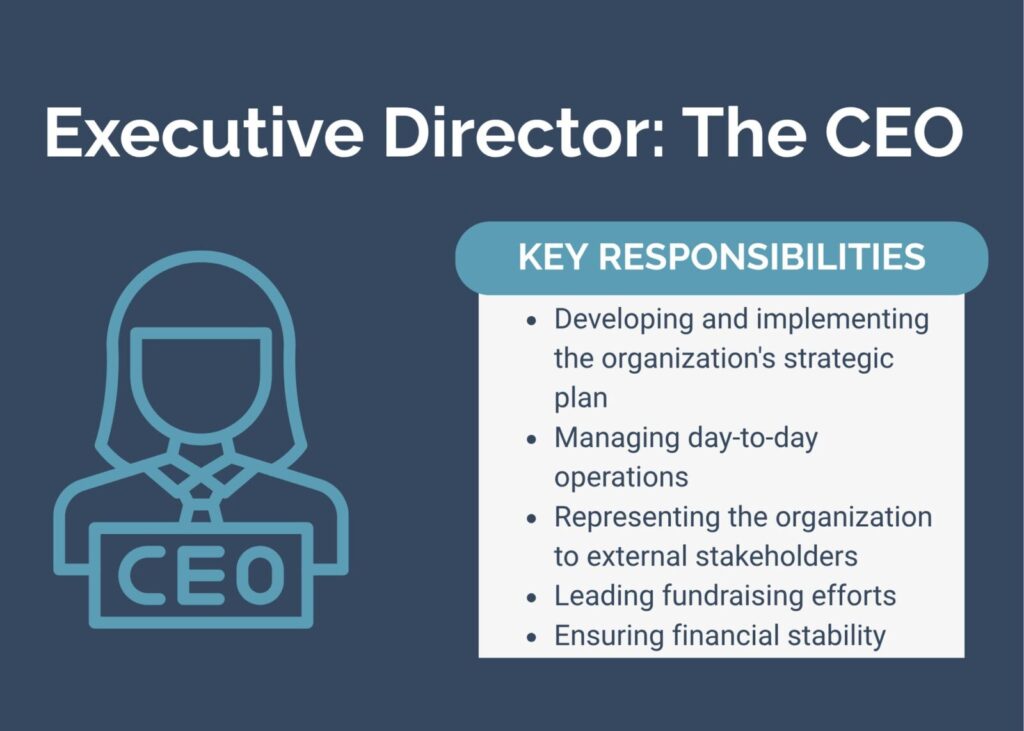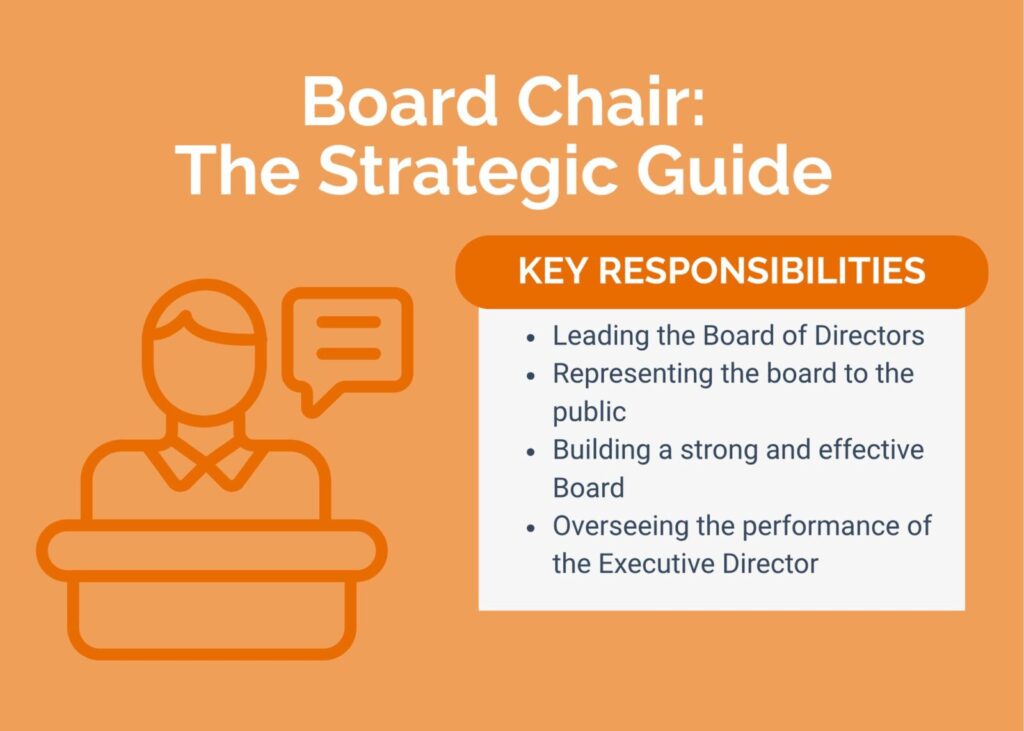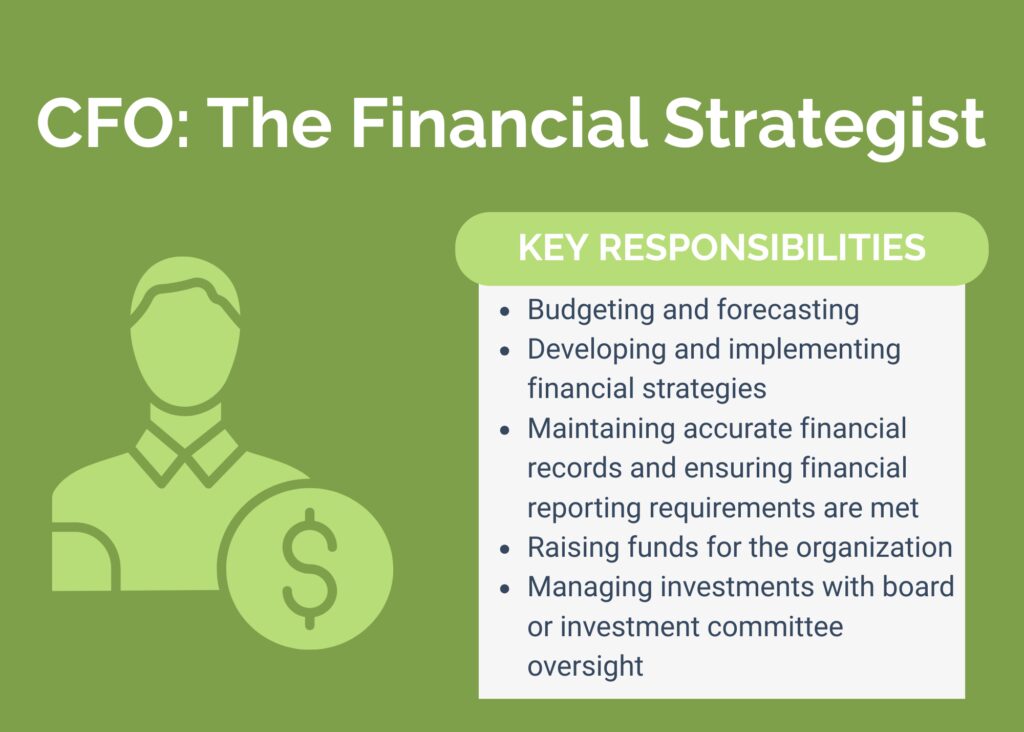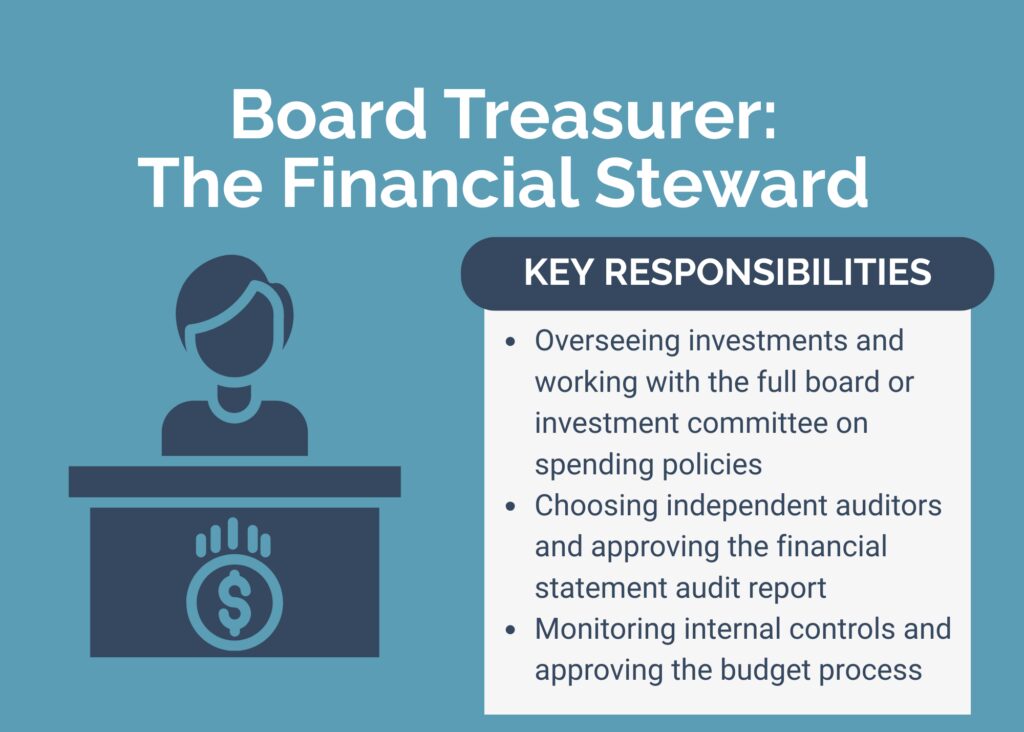Building and Being an Effective Board of Directors for Your Nonprofit: Understanding key roles and responsibilities at your organization

The Board of Directors is the guiding hand of any nonprofit organization, responsible for governance, financial health, oversight of operations and adherence to mission, strategic plans and advocacy.
An effective board is comprised of individuals committed to the organization’s mission that also share complementary skills, talents and backgrounds. Knowing their role and how that differs from management functions is also a key theme of successful boards.
What are the key management and board roles at a typical nonprofit organization?
Executive Director: The CEO
The Executive Director is the driving force behind the nonprofit’s strategic vision and day-to-day operations. They provide continuous monitoring and performance analysis to keep the organization on track in achieving its strategic goals. At each board meeting the Executive Director should provide the board with an update on the organization’s operations; this may include potential grants, upcoming fundraising events, or roadblocks the organization may be facing. Ensuring the board has all necessary information to make informed decisions regarding its oversight of the organization is a critical responsibility of the Executive Director.

Board Chair: The Strategic Guide
The Board Chair leads the Board of Directors and represents the board to the organization and to the public. A strong chair will help build an effective board around them and will effectively and efficiently run meetings. They also play a key role in overseeing the performance of the Executive Director with input from the full board or a designated committee. By fostering a positive working relationship with the Executive Director and encouraging board member participation in organizational oversight decision making, the Board Chair ensures that the board operates with ethics and transparency in its oversight role, while leaving day to day management to the organization’s employees.

CFO: The Financial Strategist
The CFO is responsible for managing the nonprofit’s financial operations and ensuring its financial health. A successful CFO implements and maintains a robust and effective internal control environment throughout the organization’s accounting and finance department. They also are responsible for budgeting, cash flow management and financial reporting requirements all while ensuring compliance with applicable laws, regulations and accounting standards.

Board Treasurer: The Financial Steward
The Board Treasurer monitors the financial operations of the nonprofit and provides financial information to the Board of Directors. The responsibilities of the Board Treasurer are complementary with the responsibilities of the CFO and therefore these two individuals typically work closely with one another. A successful Board Treasurer acts as a liaison between the board and management to ensure that the board has transparency and necessary information to oversee the organization’s financial health. They should, with board feedback, be part of choosing the independent auditors and approving the audit report. They also participate in the setting and approval of the organization’s budgeting and cash flow management process.

What should organizations consider when building and refreshing a Board of Directors at their organization?
When selecting members for a board, organizations should aim to include a variety of levels of backgrounds and expertise. Some of the most successful boards that our team works with have a variety of strengths and perspectives. For example, for an organization that deals in fine arts and craftmanship the board includes artists, as well as an attorney and accountant who can provide insights on legal and financial considerations in addition to the operational needs of the organization. Having a well-rounded board that believes in and understands not only the operations and mission of the organization, but also the administrative elements of running a successful business or organization, can be extremely beneficial.
Enthusiasm is also key, and it is crucial to seek out board members who are invested in your organization and mission. There is a big difference between a board member that regularly attends meetings but does not contribute to the discussion or ask questions, and an engaged board member who asks questions, seeks to understand (and have a positive impact on!) your organization, and considers the bigger picture. A questioning mindset applies to everything such as your strategic plan, budget, annual financial audit process or running capital campaigns.
It can be a challenge for nonprofits, especially smaller organizations, to recruit board members who offer expertise and enthusiasm. Reaching out to your network and trusted service providers (accountants, lenders, attorneys) for assistance may be helpful.
How long do board members typically serve? How many members should be included?
Board members typically have term limits. We see terms of two to six years depending on the organization, with various options for reappointment after this initial term. The goal of term limits is to introduce new individuals and fresh perspectives.
The size of a board can vary greatly between organizations. Larger boards may have up to 20 or more members. An organization’s bylaws should have important wording and rules on the number of board members, term limits, roles and certain responsibilities.
Effective leadership can guide an organization through both good and challenging times
By understanding and fulfilling key board responsibilities, defining clear boundaries from management functions, and recruiting a qualified and involved board, nonprofits can drive their organizations towards successfully achieving their mission and making a positive impact in their communities. Effective governance, strategic planning, and financial management are the cornerstones of a successful nonprofit organization.
If you have questions about your organization or would like to learn more about the services we offer, reach out to a member of BNN’s nonprofit team.
Disclaimer of Liability: This publication is intended to provide general information to our clients and friends. It does not constitute accounting, tax, investment, or legal advice; nor is it intended to convey a thorough treatment of the subject matter.


